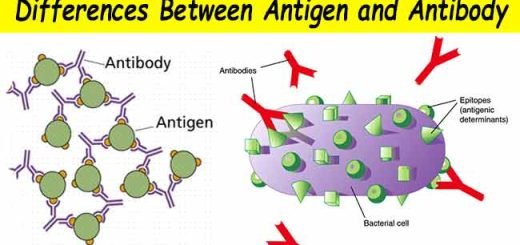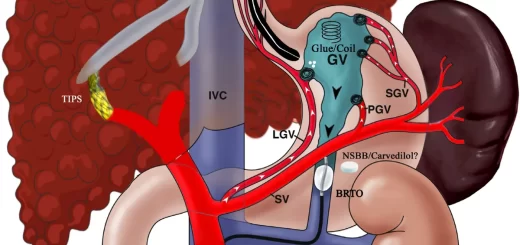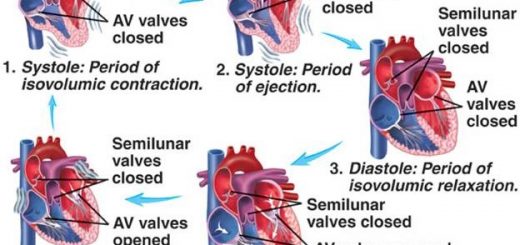Heart function, structure, Valves, Borders, Chambers and Surfaces
The heart pumps blood around your body, It delivers oxygen and nutrients to the cells and removes waste products, It consists of four chambers: two upper chambers called the right and left atria (singular: atrium) and two lower chambers called the right and left ventricles, there are valves between the atria and ventricles that make blood flows in one direction through your heart.
External feature of the heart
Position of the heart: The heart is present in the middle mediastinum.
Shape of the heart: The heart is pyramidal in shape. It has an apex and a base. To place the heart in the normal anatomical position, you should place the base posteriorly and the apex should be directed forwards, downward, and to the left.
Surfaces of the heart
- Sternocostal (anterior) surface.
- Posterior surface or base.
- Diaphragmatic surface.
The sterno-costal surface of the heart
The sterno-costal surface is formed by the 4 chambers of the heart but mainly by the right ventricle. This surface is related to body of the sternum and costal cartilage, sternocostalis muscle, anterior borders of lungs and pleura, internal thoracic vessels, sternopericardial ligaments and thymus gland (or its remains). This upper border is hidden by the ascending aorta and the pulmonary trunk.
There are two grooves in the sterno-costal surface:
- Atrio-ventricular groove (coronary sulcus) which separates the atria from the ventricles. The coronary arteries lie in this groove.
- An anterior interventricular groove which separates the right from the left ventricle.
It contains the anterior interventricular artery and the great cardiac vein.
Posterior surface (base) of the heart
- This surface is rectangular in shape.
- It is formed by the back of both; the left and the right atria (mainly the left).
- It lies opposite the middle four (5-8) thoracic vertebrae.
- The 4 pulmonary veins entering the left atrium, and the superior and inferior venae cavae entering the right atrium.
The diaphragmatic surface
This surface is triangular in shape and rests on the diaphragm. It is formed by both ventricles (mainly the left). Here the posterior interventricular groove is seen which contains the posterior interventricular branch of the right coronary artery and the middle cardiac vein. This surface is related to the central tendon of the diaphragm and part of the left copula of the diaphragm.
Notice that:
- Most of the left ventricle is posterior.
- The left atrium makes up the so-called base of the heart.
- When the body is in the supine position (lying on its back), the heart rests on its base, and the apex of the heart (the tip of the left ventricle) projects up and to the left.
- The same three borders are seen from the back of the heart.
- The anterior surface shows parts of each of the four chambers of the heart:
- Right atrium (RA).
- Left atrium (LA) this chamber is not seen in this view as it is covered anteriorly by the pulmonary artery and the ascending aorta.
- Right ventricle (RV).
- Left ventricle (LV).
Borders of the heart
- The right border is formed by the right atrium.
- The lower border is formed by the right ventricle (except near the apex where it is formed by the left ventricle only).
- The left border is formed by the left ventricle and left auricle.
- The upper border is formed by both atria mainly the left.
Heart from inside
Valves of the heart
- They prevent blood from flowing backwards.
- Two types of valves are present in the heart:
Atrioventricular valves
- Cusps of atrioventricular valves are connected to papillary muscles by chordae tendineae that connect the cusps of the valve to the papillary muscle.
- Each cusp receives chordae tendinae from two papillary muscles.
- The bases of the cusps of atrioventricular valves are attached to a fibrous annulus ring attached to the atrioventricular orifices.
1- Mitral valve
- Site: Between left atrium and left ventricle.
- Structure: It is formed of two cusps: Anterior cusp, and Posterior cusp.
2- Tricuspid valve
- Site: Between the right atrium and right ventricle.
- Structure: It is formed of three cusps: Anterior cusp, Posterior cusp, and Septal cusp.
Semilunar valves
- Two semilunar valves are located at the exit of the ventricles.
- Each valve is formed of semilunar cusps which are attached to a fibrous annulus (ring) around the valve orifice.
- The middle of the free margin of each cusp shows a fibrous thickening called a nodule. The free margin of each cusp on each side of the nodule shows a thickened fibrous strip called a lunule.
1- Pulmonary valve
- Site: Pulmonary artery.
- Structure: It is formed of three semilunar cusps: one posterior and two anterior. (Pulmonary ——— Posterior).
2- Aortic valve
- Site: Aorta.
- Structure: It is formed of three semilunar cusps: one anterior. and two posteriors. (Aortic ——— Anterior). The root of ascending aorta presents three dilatations called aortic sinuses, one above each cusp. Each cusp is pocket-like which has a concave upper surface and a convex lower surface.
Chambers of the heart
1- Right atrium
It receives venous blood from the entire body except that of the pulmonary veins.
- Crista terminalis: It is a vertical ridge that separates the smooth from the rough parts of the right atrium.
- Pectinate muscles: It is present in the rough part of the atrium.
- Fossa ovalis: It demonstrates the site of the foramen ovale in the interatrial septum.
- Openings:
- SVC: superior vena cava is a big vein draining venous blood from the upper part of the body (upper limbs, head, and neck).
- IVC: inferior vena cava is a big vein draining venous blood from the lower part of the body (abdomen, pelvis, and lower limbs).
- Tricuspid valve: is an atrio-ventricular valve between the right atrium and the right ventricle.
- Coronary sinus: is the main vein draining venous blood from the muscle of the heart.
2- Right ventricle
The cavity of the right ventricle is formed of an inflow tract and outflow tract.
Inflow tract: The right ventricle receives venous blood from the right atrium via the tricuspid valve. It has the following features:
- Trabeculae carnae: are ridges of the myocardium in the ventricular wall.
- Papillary muscles: they project into the cavity of the ventricle and attach to the cusps of the tricuspid valve by the strands of the hordate tendineae. The papillary muscles are anterior, posterior, and septal.
- Chorda tendinae: fine strands that control the closure of the valve during contraction of the ventricle.
Outflow tract: The blood then passes from the right ventricle through the pulmonary trunk via the pulmonary semilunar valve to go to the lungs.
3- Left atrium
The left atrium receives oxygenated blood from the lungs via the four pulmonary veins. The four openings of the veins are the upper right and left and lower right and left pulmonary veins. The wall is smooth and does not contain pectinate muscles except at the auricle.
Openings:
- 4 Pulmonary veins
- Mitral valve: is a bicuspid valve.
It allows the passage of oxygenated blood from the left atrium to the left ventricle.
4- Left ventricle
The wall of the left ventricle is three-time thicker than the wall of the right ventricle. The cavity of the left ventricle is formed of an inflow tract and outflow tract:
Inflow tract: Blood enters the left ventricle from the left atrium through the mitral valve and inflow tract and outflow tract: (bicuspid valve).
Features:
- Trabeculas carnae: They are ridges of the myocardium in the ventricular wall (finer & more numerous).
- Papillary muscles: They are anterior and posterior.
- Chorda tendinae: They are fine strands that control the closure of the valve during contraction of the ventricle.
Outflow tract: Then the blood is pumped out from the left ventricle to the aorta through the aortic valve. The smooth outflow part is called the aortic vestibule.
Heart & Pericardium structure, Abnormalities & Development of the heart
Thoracic vertebrae structure, function, Chest wall muscles & Intercostal arteries
Anatomy of the cardiovascular system, Thoracic cage function, structure & anatomy
Interventricular septum, Blood supply, valves & Surface anatomy of the heart



